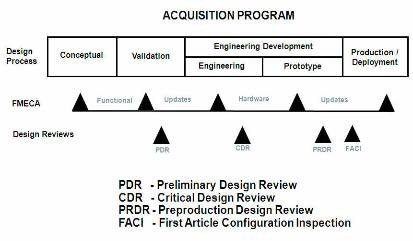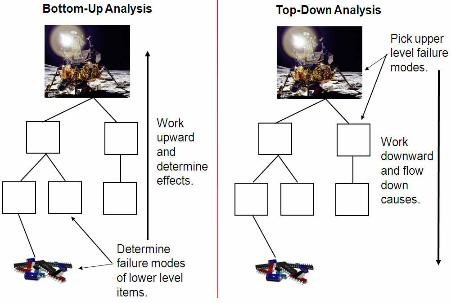6.21 - Design FMEA
Design Failure Mode and Effects Analysis (FMEA) is an analysis technique that facilitates the identification of potential design problems by examining the effects of lower level failures on system operation.
It can be used to analyze the hardware, functions, interfaces or any other aspect associated with the design. The focus of this type of FMEA is on improving the design itself, as opposed to looking at or analyzing the manufacturing process (see guide 5.30).
Design FMEA’s should be scheduled and completed concurrently as an integral part of the design process. Ideally, this analysis should begin early in the conceptual phase of a design, when the design criteria, mission or product requirements and performance parameters are initially developed. Clearly to be the most effective, the final design should reflect and incorporate the recommendations.
Of course to be of any significant value it is recommended that the FMEA be performed early-on in the design process. However, in some industries, it is not uncommon to also use FMEA after a system is built. In this case, a design FMEA can be helpful in order to assess existing risks using this same systematic approach. The results or recommendations can lead to a prioritized list of enhancements that would be considered for future designs.
Below is a sample FMEA timeline, which is common when performing design failure modes analyses on military programmes. Some companies incorporate the design FMEA as part of a phase gate process described in guide 6.03.

The analysis team can use either a qualitative or quantitative approach when performing the Design FMEA, and the assessment criteria and outputs can be tailored to meet customer requirements. The FMEA team can also use either a top down approach or a bottom-up approach depending on what works best. The diagram below depicts both of these approaches.

This guide is merely an introduction the concept of Design FMEA. For detailed Design Failure Mode, Effects Criticality Analysis examples and a more in-depth discussion on the topic, take advantage of some of the resources available on the web using the search term “design FMEA example”.
Risk Priority Numbering (RPN)
A key element in the usefulness of the FMEA technique is the calculation of the risk priority number (RPN).
In the basic form of FMEA the risk priority number is calculated from the severity (S) of the fault and the probability of the fault occurring (O) and the likleyhood of detection (D) by design control. That is RPN = S*O*D.
Issues of prioritisation occur when RPN’s are the same but have different severity values. Companies have developed different ways of showing those elements of concern that have a high severity rating. Some have proposed concatenating the S O D values rather than using their quotient as the Risk Priority Number.
So two elements where one has S = 9, O = 2 and D = 2 and the other has S = 2, O = 9 and D = 2 would both have an RPN value of 36 when they are multiplied.
When contenating the values they are differentiated thus to give 922 and 292. The one with the higher number would be worked on first.